Abstract
Phosphonoformate (PFA) inhibits multiplication of visna virus in sheep choroid plexus cells; a 50% reduction of virus yield was obtained by 20 to 80 microM PFA. Morphological changes, such as syncytial formation and cell degeneration, could be reversibly prevented by PFA. Cell growth was not significantly affected at 500 microM PFA, although prolonged treatment with 2 mM PFA did arrest cell growth. Cell-free reverse transcriptase activity primed with various synthetic template-primers was inhibited about 90% in the presence of 100 microM PFA. The results from kinetic experiments suggested that reverse transcriptase was utilized early but not late in the infection cycle. A structurally related substance, phosphonoacetate, did not inhibit visna virus multiplication and had no inhibitory effect on reverse transcriptase activity at a concentration of 500 microM.
Full text
PDF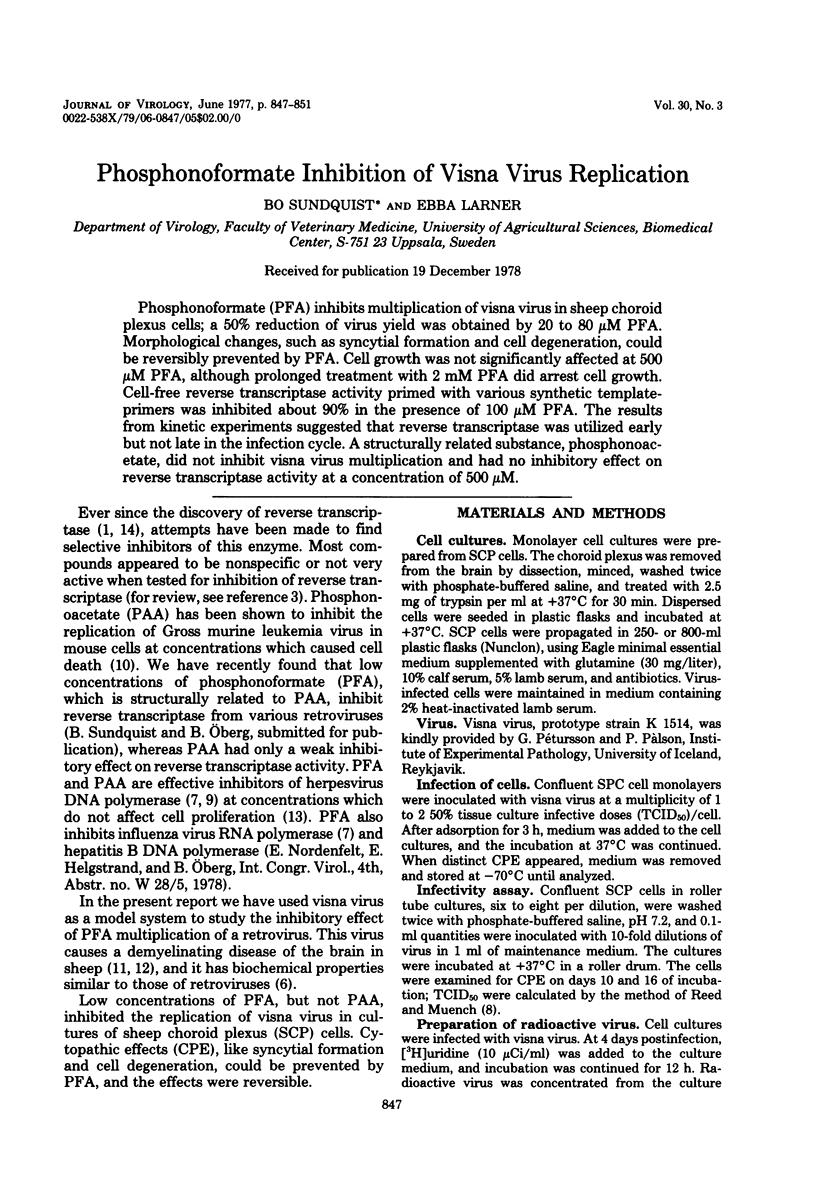
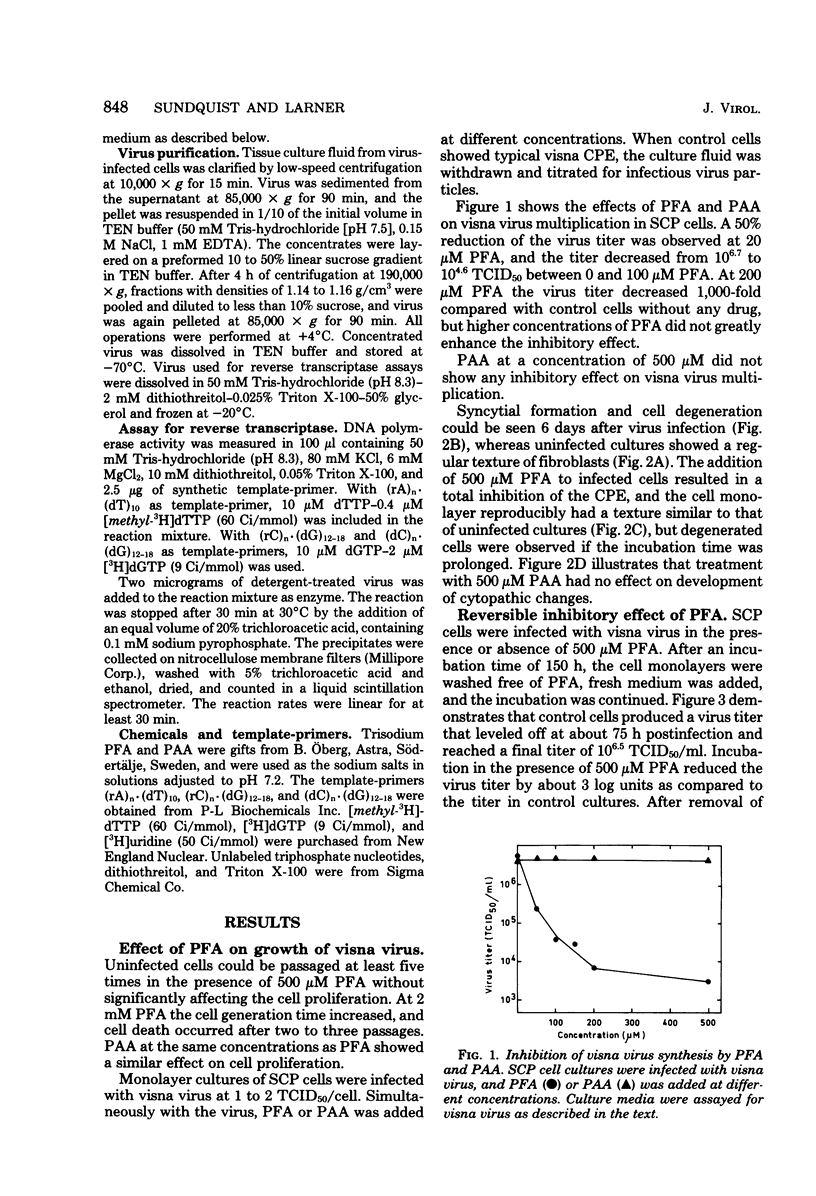
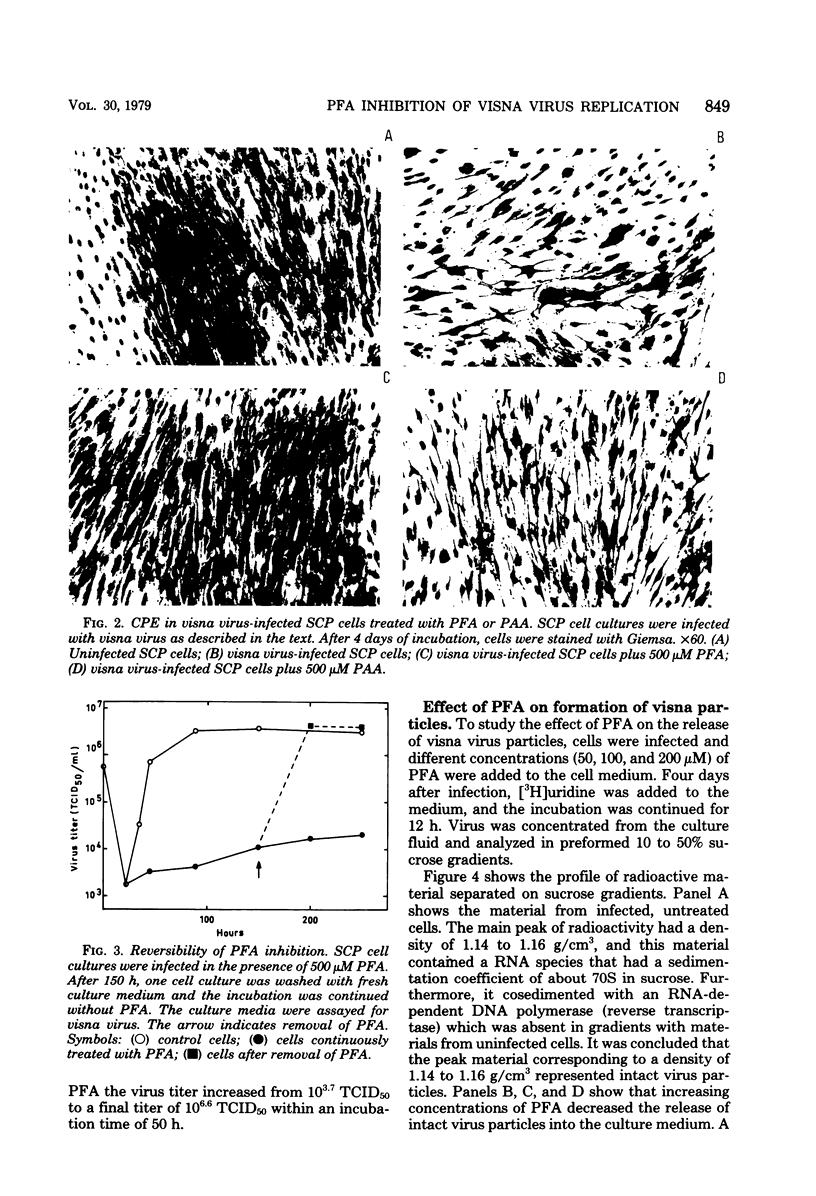
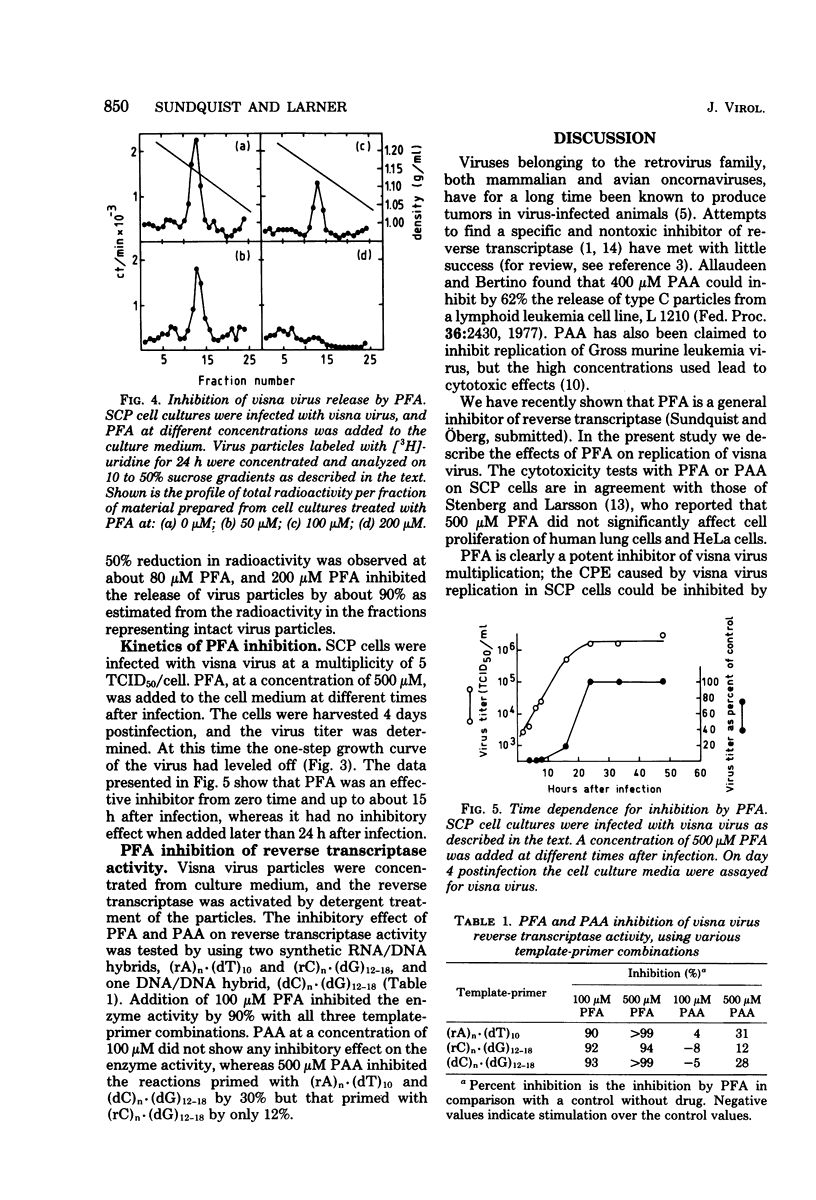
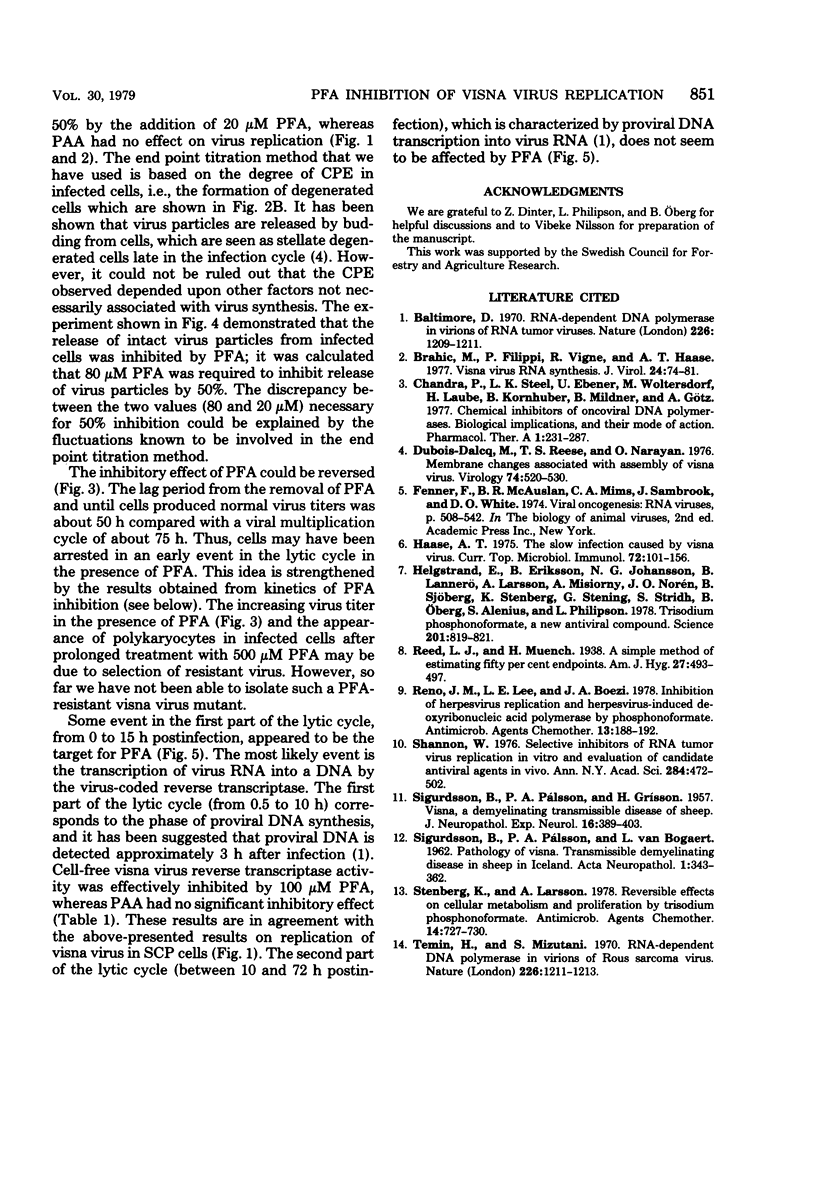
Images in this article
Selected References
These references are in PubMed. This may not be the complete list of references from this article.
- Baltimore D. RNA-dependent DNA polymerase in virions of RNA tumour viruses. Nature. 1970 Jun 27;226(5252):1209–1211. doi: 10.1038/2261209a0. [DOI] [PubMed] [Google Scholar]
- Brahic M., Filippi P., Vigne R., Haase A. T. Visna virus RNA synthesis. J Virol. 1977 Oct;24(1):74–81. doi: 10.1128/jvi.24.1.74-81.1977. [DOI] [PMC free article] [PubMed] [Google Scholar]
- Dubois-Dalcq M., Reese T. S., Narayan O. Membrane changes associated with assembly of visna virus. Virology. 1976 Oct 15;74(2):520–530. doi: 10.1016/0042-6822(76)90357-3. [DOI] [PubMed] [Google Scholar]
- Haase A. T. The slow infection caused by visna virus. Curr Top Microbiol Immunol. 1975;72:101–156. doi: 10.1007/978-3-642-66289-8_4. [DOI] [PubMed] [Google Scholar]
- Helgstrand E., Eriksson B., Johansson N. G., Lannerö B., Larsson A., Misiorny A., Norén J. O., Sjöberg B., Stenberg K., Stening G. Trisodium phosphonoformate, a new antiviral compound. Science. 1978 Sep 1;201(4358):819–821. doi: 10.1126/science.210500. [DOI] [PubMed] [Google Scholar]
- Reno J. M., Lee L. F., Boezi J. A. Inhibition of herpesvirus replication and herpesvirus-induced deoxyribonucleic acid polymerase by phosphonoformate. Antimicrob Agents Chemother. 1978 Feb;13(2):188–192. doi: 10.1128/aac.13.2.188. [DOI] [PMC free article] [PubMed] [Google Scholar]
- SIGURDSSON B., PALSSON P., GRIMSSON H. Visna, a demyelinating transmissible disease of sheep. J Neuropathol Exp Neurol. 1957 Jul;16(3):389–403. doi: 10.1097/00005072-195707000-00010. [DOI] [PubMed] [Google Scholar]
- Shannon W. M. Selective inhibition of RNA tumor virus replication in vitro and evaluation of candidate antiviral agents in vivo. Ann N Y Acad Sci. 1977 Mar 4;284:472–507. doi: 10.1111/j.1749-6632.1977.tb21983.x. [DOI] [PubMed] [Google Scholar]
- Stenberg K., Larsson A. Reversible effects on cellular metabolism and proliferation by trisodium phosphonoformate. Antimicrob Agents Chemother. 1978 Nov;14(5):727–730. doi: 10.1128/aac.14.5.727. [DOI] [PMC free article] [PubMed] [Google Scholar]
- Temin H. M., Mizutani S. RNA-dependent DNA polymerase in virions of Rous sarcoma virus. Nature. 1970 Jun 27;226(5252):1211–1213. doi: 10.1038/2261211a0. [DOI] [PubMed] [Google Scholar]



